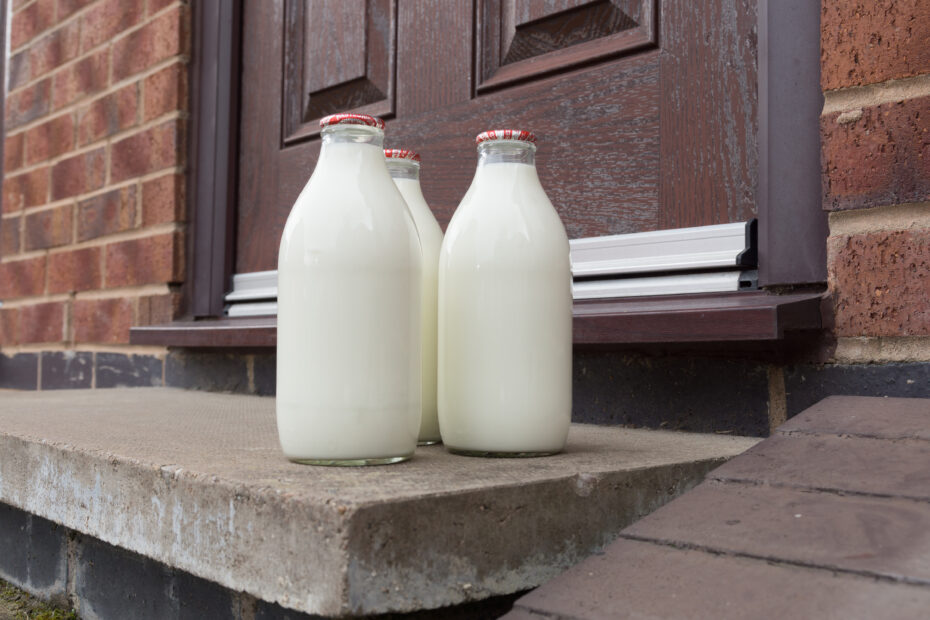Recently, articles have been circulating about the ability of males to lactate. In this article, Tracy Donegan R.M, Countess Special Advisor on Healthcare, takes a closer look at the science behind the claims and concludes that while it may be possible, it’s not a viable option for the health of mothers or babies.
If you’re old enough to remember the milkman, you’re old enough to remember the good old days of science and biology – when men were men and women were women. Fast forward thirty years or so and the milkman has a new meaning – and it has nothing to do with Premier Dairies.
In February 2024 a document was leaked from an NHS Trust in the UK that suggested that the milk produced by biological men who want to breastfeed their child is not entirely dissimilar to breastmilk. This set the world of lactation and breastfeeding supporters into a tailspin of disbelief. The visceral reaction of so many led me to investigate further. Did I have a blind spot? Is the fluid produced by men with the use of hormones and medication as good as breastmilk? You might be surprised to learn that evidence does suggest that males produce milk of the same composition and in the same way as women who relactate or induce lactation.
At first glance it sounds intriguing, especially if you’ve been a mother in the first few days after giving birth – overwhelmed, exhausted and in pain. Would having a partner to share those early struggles encourage more mothers to continue breastfeeding?
So I did a little more research. It turns out that the available research on male-induced lactation is made up of a handful of case studies – which are not representative of evidence-based care. They are one of the lowest forms of evidence.
For example, the following case study was published in March 2024, where a trans-identified male took a cocktail of drugs during his partner’s pregnancy, timed to induce lactation on the birth of the baby. https://internationalbreastfeedingjournal.biomedcentral.com/articles/10.1186/s13006-024-00624-1?fbclid=IwAR34P9n4z2hKL09LxcF1LjJYzPXlSjjZsrPxW3uBRb9V3FVUdiN8w0utsVQ_aem_AVpZPRLIBa76jvvKpknNyp1I-c4sBfKCuni3aS5HRiUNaAaroE_1s95bi-ItBDQERGU
“To induce lactation, we implemented a hormone-regimen to mimic pregnancy, using estradiol and progesterone, and a galactagogue; domperidone*. Our patient started pumping during treatment. Dosage of progesterone and estradiol were significantly decreased approximately one month before childbirth to mimic delivery and pumping was increased. Our patient started lactating and although the production of milk was low, it was sufficient for supplementary feeding and a positive experience for our patient.
Two weeks after birth, lactation induction was discontinued due to suckling problems of the infant and low milk production.”
*Note that Domperidone is not recommended in lactating women due to cases of cardiac events. Considering most breastfeeding mothers would rather not take a Panadol even if our leg was hanging off in case it passed to our baby, it seems irresponsible to take a drug such as Domperidone where there are no adequate studies determining risk to infants.
“Our patient produced a maximum of 7mls a day, which was enough for supplementary feeding. Since the infant had a short lingual frenulum, latching to the nipple was suboptimal and caused suckling problems. He decided to discontinue lactation induction two weeks after the birth of his child, because he experienced the frequent pumping to be exhausting and milk production to be low.”
It is remarkable that this paper doesn’t reference the biological mother at all. Did this baby have access to any breastmilk from its biological mother? Did this experiment result in the biological mother continuing to breastfeed or was all of this pumping and medication in those intense two weeks postpartum just too much for everyone? There’s so much missing information.
Nowhere in this study is it acknowledged that breastfeeding is so much more than getting calories into your newborn. It’s a relationship that has endured the test of time – mothers and babies are supposed to be together.
There are important questions to consider, such as:
●What is the impact on the infant’s health?
● Does man milk behave the same way female breastmilk does (changing daily with antibodies to boost baby’s immune system, nutrient levels, etc)? Mom and baby’s body are exchanging biological information at every breastfeed.
●What is the impact on the mother’s health? Breastfeeding is associated with significant health benefits for women, including the reduction of some cancers and diabetes.
●What is the impact of interrupting the mother/baby dyad in those crucial early days of bonding?
At the moment we don’t really have answers to any of these questions, other than the well-documented research on the risks of interrupting breastfeeding in the crucial early days postpartum. What we do know is that babies are connected to their mothers in ways we don’t fully understand. When a baby cries, there are wavelengths of sound that we cannot hear, which start redirecting blood flow to the mother’s breast in order to nurse her baby. Babies are born to seek skin to skin contact with their mother and to breastfeed soon after birth, finding their way instinctively to the breast by their sense of smell – breastmilk has a smell familiar to them from the amniotic fluid in the womb.
So in conclusion, while it is possible for males to lactate, it seems that millions of years of evolution cannot be replicated by a handful of hormones and medications. Which brings to mind that old adage, if it sounds too good to be true, it probably is too good to be true.
